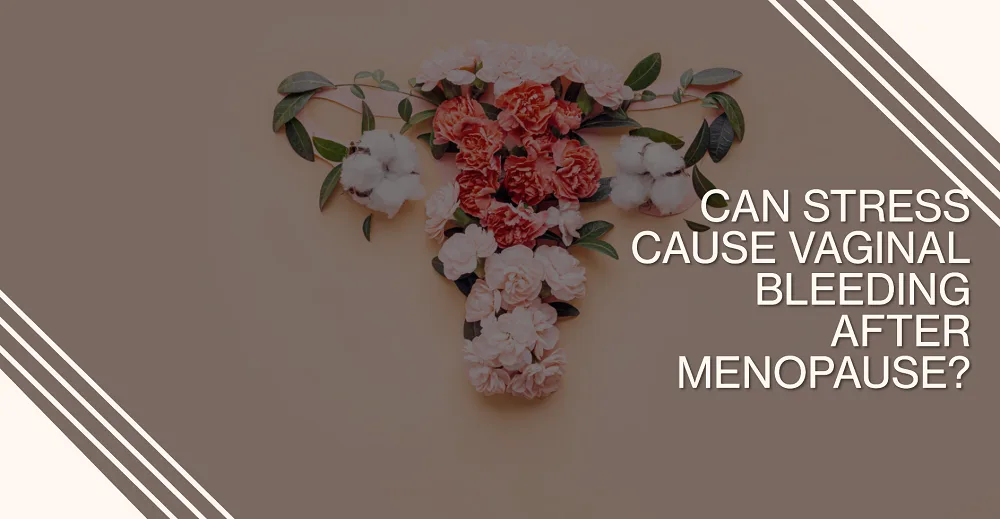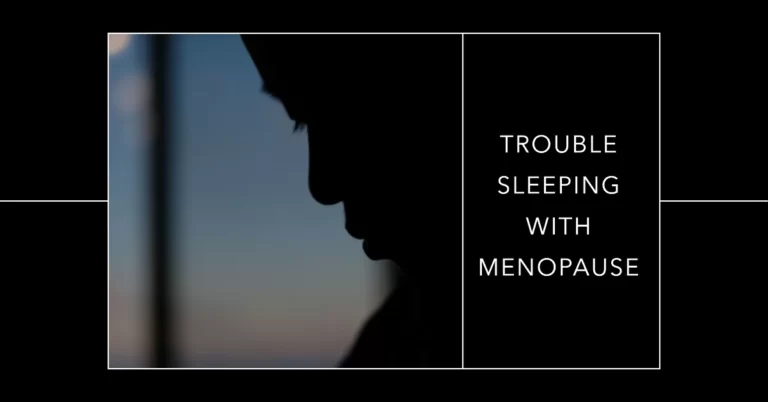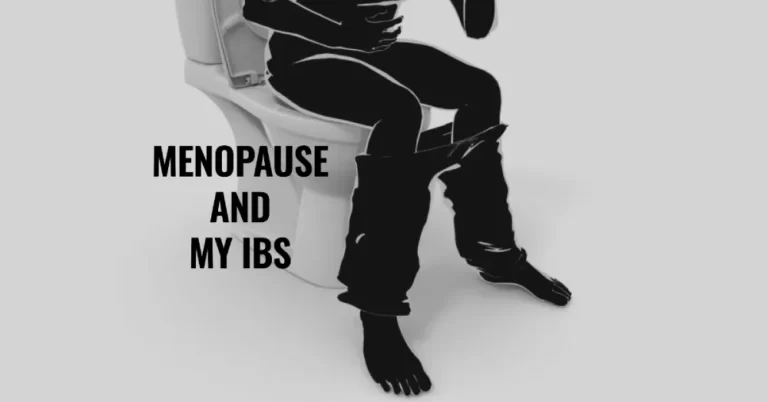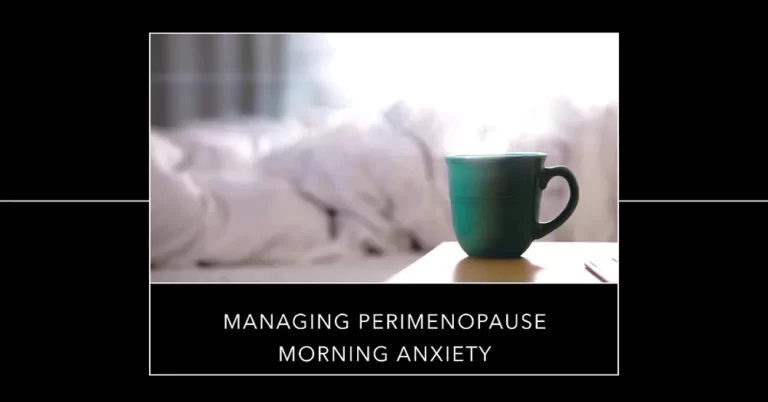Can Stress Cause Vaginal Bleeding After Menopause: Tips & Advice for Dealing With Stress-Induced Post Menopausal Bleeding
It’s normal for women to bleed during their menstrual years, but postmenopausal bleeding is a cause for concern and should be addressed by a doctor. Believe it or not, stress can contribute to this type of blood loss.
Stress has the power to negatively affect our bodies when not managed properly, even after menopause. Work-related worries, relationship issues, or difficult life events are just some forms of increased tension in everyday life.
So if you’re experiencing abnormal vaginal bleeding later in life, your chronic anxiety could be part of the problem. You must be wondering, how so?
When stress isn’t managed properly, it can lead to reduced estrogen levels. This decrease in the female sex hormone alters the lining of the uterus, making it more susceptible to bleeding and spotting.
It’s important to note that hormone changes are not always caused by stress, but this is one possible explanation for your postmenopausal bleeding. So, to keep your post-menopausal fading in check, consider consulting a professional therapist to manage anxiety and look into lifestyle changes like exercise or yoga for further support.
At the same time, be sure to speak with your gynecologist about any concerns or questions regarding your postmenopausal bleeding, and keep track of any changes in frequency or volume for a more accurate diagnosis. Let’s explore the causes, the symptoms, and, most importantly, how to deal with them.
What Causes Postmenopausal Bleeding?
Menopause is a natural biological process that marks the end of a woman’s reproductive years. This process is typically marked by the cessation of the menstrual cycle, with periods becoming less frequent until they eventually stop altogether. This usually occurs between the ages of 45 and 55.
Postmenopausal bleeding is any vaginal bleeding that occurs after a woman has gone 12 months without a menstrual period. This can come as a surprise to many women, as they assume that once they have gone through menopause, any bleeding or spotting should not happen.
But because the body’s hormones can still fluctuate even after menopause, postmenopausal bleeding is quite common and can be caused by a range of different factors.
A variety of factors can cause vaginal bleeding during menopause. Let’s take a look at some of the common causes:
Hormonal Changes
During menopause, the amount of estrogen and progesterone produced by the ovaries decreases, leading to a wide range of physical and emotional changes.
One of the most common causes of postmenopausal bleeding is hormonal changes during menopause. As the levels of estrogen decrease, the lining of the uterus, also known as the endometrium, may become thin and fragile, making it more susceptible to bleeding. This bleeding can occur irregularly and without any apparent cause and may range from light spotting to heavy bleeding.
Medical Conditions
Several medical conditions can be behind postmenopausal bleeding.
- Fibroids, for example, are noncancerous growths that can occur within the uterus and sometimes lead to vaginal bleeding after menopause.
- Polyps, small tissue growths that can develop in the uterus, can also cause postmenopausal bleeding.
- Endometrial hyperplasia, a thickening of the uterus lining, is another possibility. This condition can sometimes lead to abnormal vaginal bleeding, and it’s important to catch it early to prevent any progression.
- Lastly, and most concerning, is the possibility of cancer. Endometrial cancer is a type of cancer that can develop within the uterine lining.
But keep in mind that just because you’re experiencing postmenopausal bleeding doesn’t mean you have any of these conditions. It could just be a normal part of the aging process.
While it’s not necessarily the first thing to jump to conclusions about, it is important to put your mind at ease and get checked out by a doctor. Nonetheless, a doctor should be consulted to rule out any potential risks.
Medications
Postmenopausal bleeding can be a confusing and concerning symptom for many women. While it’s important to speak with your healthcare provider if you experience any irregular bleeding, it’s also helpful to understand some of the potential causes.
The use of certain medications can also contribute to postmenopausal bleeding, such as
Blood thinners: Medications such as warfarin, heparin, or aspirin can sometimes cause vaginal bleeding. These medications are used to prevent blood clots and reduce the risk of heart attack or stroke, but they can also affect blood flow throughout the body.
Tamoxifen: This medication is used to treat breast cancer, but it can also cause irregular bleeding in postmenopausal women. Tamoxifen works by blocking estrogen receptors, which can lead to changes in the lining of the uterus.
Hormone replacement therapy: While hormone replacement therapy (HRT) is sometimes used to treat menopause symptoms, it can also cause vaginal bleeding. HRT involves taking hormones such as estrogen and progesterone to help regulate hormone levels. However, some women may experience breakthrough bleeding while taking HRT.
Other medications: Several medications have been linked to vaginal bleeding, including certain antidepressants, thyroid medications, and steroids. Speaking with your healthcare provider if you experience unusual symptoms while taking any medication is important.
Vaginal Dryness
As women age and enter menopause, their bodies undergo a series of changes that can sometimes be uncomfortable or unexpected. One of the most common issues women face during this time is vaginal dryness.
This occurs when estrogen levels decrease, causing the vaginal walls to thin and lose elasticity. While this may not seem like a big deal at first, it can quickly lead to discomfort and even discomfort during sex.
In fact, many women experience postmenopausal bleeding due to vaginal dryness. This happens when the delicate tissues inside the vagina become so thin and fragile that they may tear or bleed during intercourse.
For some women, this can be a source of extreme embarrassment and anxiety, making them hesitant to engage in sexual activity with their partners.
Lifestyle Factors
Stress and lack of sleep can trigger postmenopausal bleeding and a range of lifestyle factors such as alcohol consumption, smoking, and poor nutrition.
While stress is not a direct cause of postmenopausal bleeding, it can exacerbate hormonal imbalances and contribute to developing medical conditions that cause bleeding.
Alcohol consumption, smoking, and poor diets can also contribute to postmenopausal bleeding by affecting hormone levels and causing inflammation.
The Relation Between Stress and Postmenopausal Bleeding
Stress is our body’s natural response to any physical, mental, or emotional demands. It can cause a wide range of reactions within the body, including changes in hormone production that may result in postmenopausal bleeding.
Stress and Hormone Production
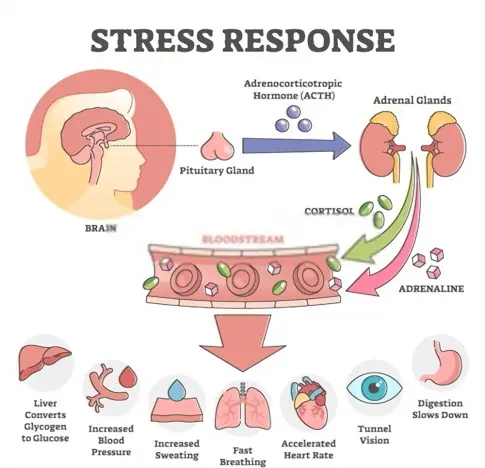
The hormonal changes that occur during stress can lead to an imbalance in the body, which may result in postmenopausal bleeding. Here are some ways that stress can affect hormone production:
Effect of Cortisol
Stress can cause significant changes in hormone production, particularly cortisol and adrenaline. Cortisol is known as the “stress hormone” because it is released in response to stressful situations, preparing your body for fight or flight.
Cortisol, in particular, can alter the levels of sex hormones like estrogen and progesterone, which regulate your menstrual cycle. If cortisol is consistently high, it can disrupt the delicate balance of hormones and lead to irregular periods or postmenopausal bleeding.
Thyroid Hormones
The thyroid gland, the small butterfly-shaped gland in your neck, produces hormones that regulate your body’s metabolism, including estrogen and progesterone. When you’re under stress, your body releases cortisol, the stress hormone.
While cortisol is essential in small amounts, prolonged exposure to stress can lead to an imbalance in cortisol levels and, in turn, affect your thyroid hormone production.
So, what does this have to do with vaginal bleeding?
When there’s an imbalance in thyroid hormones, it can lead to a decrease in estrogen and progesterone levels. These hormones are responsible for maintaining the thick lining of your uterus. Without enough of these hormones, the lining can become thinner, making it more prone to bleeding.
Adrenal Hormones
The adrenal glands sit on your kidneys and produce several hormones, including cortisol, adrenaline, and aldosterone. These hormones play a critical role in maintaining hormonal balance in the body.
They also help respond to stress by increasing blood pressure, heart rate, and sugar levels. When your body is under stress, the adrenal glands release cortisol and adrenaline to help you cope.
However, chronic stress can cause the overproduction of these hormones, leading to a hormonal imbalance, resulting in vaginal bleeding in postmenopausal women, even if they have stopped menstruating.
In normal cases, estrogen is crucial in preparing the uterus for pregnancy by thickening its lining. However, after menopause, estrogen levels decrease, and the uterus lining thins out. This leaves the uterus lining dry and prone to injury, leading to bleeding.
Stress can elevate cortisol levels, which, in turn, can decrease estrogen production. As a result, the already thin uterus lining can become even thinner, making it more susceptible to injury and resulting in vaginal bleeding.
The Effect of Stress on the Body’s Immune System and Blood Flow
Stress can profoundly affect the body’s immune system, which is why it is essential to manage it effectively. Physical stress occurs when the body is physically exhausted or overworked.
This type of stress can affect hormone production, digestion, blood flow, and other bodily functions. It can also weaken the immune system and make it more difficult for the body to heal, resulting in postmenopausal bleeding.
Again, emotional stress is caused by difficult situations or events that cause distress, such as relationship issues, financial difficulties, and work-related problems. This type of stress can also affect hormone production and the immune system, which may lead to postmenopausal bleeding.
Let’s see how:
- Chronic stress can lead to inflammation. When we experience stress, our bodies produce cortisol, a hormone that can weaken our immune system over time.
When our immune system is weakened, it can be harder for our body to resist infections, contributing to inflammation and bleeding.
- Stress can cause blood vessels to constrict. Stress also causes changes in our cardiovascular system, affecting blood flow throughout the body. This can cause the blood vessels in the vaginal tissue to become more fragile and susceptible to bleeding.
When the body is under stress, blood vessels can constrict, which reduces blood flow to the reproductive system. This reduction in blood flow can lead to vaginal bleeding.
- Stress can increase the risk of cancer. Chronic stress has been linked to an increased risk of various types of cancer, including endometrial cancer, which can cause postmenopausal bleeding.
What are the Symptoms of Postmenopausal Bleeding, and How Can It Be Diagnosed?
Postmenopausal vaginal bleeding caused by stress may present a variety of symptoms. In most, your doctor will perform a physical exam and take a medical history.
Spotting or Bleeding Between Periods or After Sex
If you are bleeding after menopause, paying attention to the type of bleeding is important. Spotting or bleeding between periods or after sex is a symptom associated with stress-induced postmenopausal bleeding.
Heavier or Longer Periods Than Usual
If you have had a menstrual period after menopause, you may notice that it is heavier or lasts longer than your usual periods. This may be due to hormonal changes or other medical conditions.
Excessive Vaginal Discharge
Excessive vaginal discharge can also be a sign of postmenopausal bleeding caused by. If you notice any changes in your normal vaginal discharge, such as an increase or change in color or odor, it is important to speak to your doctor.
Pelvic Pain or Cramping
Pelvic pain or cramping may also occur along with postmenopausal bleeding. This may indicate an underlying medical condition that requires medical attention.
Fatigue, Irritability, or Anxiety
Lastly, stress-induced postmenopausal bleeding may cause mood changes such as fatigue, irritability, or anxiety. These symptoms may affect your quality of life, so it’s important to address them promptly.
If you experience these symptoms, you should see your doctor to rule out any serious causes. Your doctor may also order tests such as pelvic imaging scans, hormone levels tests (to check for imbalances), and an endometrial biopsy.
This is done to rule out any underlying conditions causing the bleeding. Your doctor may refer you to a gynecologist or other specialist, depending on the results.
The best test for postmenopausal bleeding is the endometrial biopsy. During this procedure, a small tissue sample is collected from the lining of the uterus and examined under a microscope. This test is relatively simple to perform and results can be available promptly.
There are several reasons why a woman may experience postmenopausal bleeding. It could be due to hormonal changes, endometrial hyperplasia, or cancer. By performing an endometrial biopsy, medical professionals can accurately identify the underlying cause and provide tailored treatment to ensure optimal health.
It’s important to mention that a pelvic examination and transvaginal ultrasound may be performed before an endometrial biopsy to help identify other abnormalities or potentially cancerous cells.
Coping with Stress-Induced Vaginal Bleeding after Menopause
Stress-induced vaginal bleeding can occur in post-menopausal women and is manageable with the right coping techniques. Here are some top strategies to help cope with stress-induced vaginal bleeding after menopause.
Stress Management Techniques

Stress is often the culprit behind vaginal bleeding after menopause. The body’s reaction to stress can cause hormonal imbalances, leading to the shedding of vaginal tissues.
Therefore, it is important to find ways to manage stress effectively. Here are some stress management techniques that may help:
● Mindfulness meditation: Meditation is an excellent way to reduce stress. Try starting with just a few minutes daily and working your way to a lengthier practice.

● Yoga: Yoga is another great method for stress relief. It combines physical exercise with meditation and breathing techniques.
● Deep breathing exercises can help lower cortisol levels, a stress-related hormone.
● Journaling: Writing down thoughts and feelings can be a great way to process stress.
● Progressive muscle relaxation: This technique involves tensing and then releasing different muscle groups throughout your body.
● Guided imagery: Visualization can be an effective method of stress relief. Try picturing a relaxing scene, like a beach or a forest.
Self-care Strategies
Self-care is essential to managing any health condition. Taking care of yourself is your responsibility, and it can help ease symptoms and prevent further health complications.
Here are some self-care strategies to help you cope with vaginal bleeding:
● Use lubricants during intercourse to prevent further irritation and bleeding.
● Wear cotton underwear as it helps keep the area dry.
● Avoid tight clothing around the vaginal area.
● Avoid douching and scented products, which can irritate or inflame the tissue.
● Take warm baths to help relieve pain and discomfort.
● Use a heating pad to relieve cramping or discomfort.
● Avoid using tampons or menstrual cups instead of sanitary pads or panty liners.
● Ensure you get enough rest. Aim for eight hours of sleep each night and maintain a consistent sleep schedule.
● Eat a healthy, balanced diet and stay hydrated. Eating a balanced diet rich in antioxidants and phytoestrogens (plant-based compounds that mimic estrogen in the body) may help reduce hormone imbalance and postmenopausal bleeding.

● Get regular exercise to help reduce stress. Exercise releases endorphins, which are natural mood boosters. Try to get at least 30 minutes of exercise each day.
● Talk to your doctor about hormone replacement therapy (HRT) if needed.
Support from Loved Ones
Support from family and friends can also be beneficial in coping with stress-induced vaginal bleeding. Sharing your experiences with others can provide you with a sense of relief and comfort.
It can also help you find practical solutions and coping mechanisms. Feel free to let your emotions and secrets out.
Seek the support of loved ones and people in your circle who understand the challenges of menopause.
Importance of Seeking Medical Attention
Stress-induced vaginal bleeding should not be ignored. If the bleeding persists or is heavy, it is crucial to seek medical attention.
Persistent vaginal bleeding after menopause may indicate a more severe underlying condition, such as uterine cancer. Your doctor may recommend diagnostic tests such as pelvic exams or ultrasounds to rule out severe medical conditions.
Keep in mind that menopause is a process, and it’s essential to be patient and kind to yourself. With the right support, you can manage your symptoms and make the most of this new phase of your life.
Alternative Nutritional Supplements
In addition to lifestyle changes and treatments, certain nutritional supplements may also be beneficial for managing stress-induced vaginal bleeding. For example, omega-3 fatty acids contain anti-inflammatory properties that can help reduce inflammation.
Vitamin D is another important nutrient that helps to regulate hormones and improve mood. Stress relief supplements such as NuviaLab Relax are expertly crafted with unique ingredients to help you unwind and stay cool as a cucumber, even in the most nerve-wracking situations.
As well as supporting your nervous system and brain function, it enhances your overall cognitive function. Other herbal remedies, such as Ashwagandha and Chamomile, may also be beneficial in managing stress levels.
Treatments for Postmenopausal Bleeding
Postmenopausal bleeding is a common issue that affects many women. Fortunately, several treatment options can help manage this condition and improve overall quality of life. In this article, we’ll explore three different approaches to treating postmenopausal bleeding: hormone therapy, surgical treatments, and management techniques for stress-related bleeding.
Hormone Therapy
One of the most common treatment options for postmenopausal bleeding is hormone therapy. This involves taking medications or undergoing procedures that help replace or balance the hormones in your body, which can help regulate your menstrual cycle and reduce bleeding.
While hormone therapy can be very effective, talking to your doctor about the potential risks and side effects is important. Some women may experience negative side effects like headaches, nausea, or breast tenderness.
Additionally, long-term use of hormone therapy may increase your risk of certain health problems like blood clots, stroke, or breast cancer.
Surgical Treatments
If hormone therapy isn’t effective or isn’t a good option for you, your doctor may recommend surgical treatments to manage your postmenopausal bleeding. This could include procedures like endometrial ablation, which involves removing the lining of your uterus to reduce bleeding, or a hysterectomy, which involves removing your uterus altogether.
While surgical treatments may be more effective in treating postmenopausal bleeding, they also come with risks and side effects. Surgery can be expensive, and the recovery time can be lengthy.
Also, some women may experience negative side effects like pain, bleeding, or infection following the procedure. If you are experiencing vaginal bleeding after menopause, don’t hesitate to contact your healthcare provider.
They’ll perform a physical exam and may run tests to determine the underlying cause of your bleeding. Treatment will depend on the cause, but in some cases, medication or surgery may be necessary.
Here are some tips to prepare for your appointment:
If you’re experiencing postmenopausal bleeding, you must speak with your healthcare provider to rule out any serious underlying conditions. Your provider may recommend several tests, including a pelvic exam, ultrasound, or biopsy.
They may also review your medications to see if they could contribute to your symptoms.
- Make notes of your symptoms to discuss with your doctor.
- Bring a list of your current medications, including any over-the-counter supplements or vitamins.
- Don’t hesitate to ask questions and share your concerns with your healthcare provider.
- Don’t feel shy about discussing any stressors or emotional issues that could be causing your postmenopausal bleeding. If you bottle up your emotions, you may be more likely to experience worsening symptoms.
- Finally, keep up with any follow-up appointments or tests your provider recommends.
Why am I suddenly bleeding years after menopause?
While post-menopausal bleeding may seem like a topic you want to avoid, it is important to address the issue immediately. Any vaginal bleeding that occurs after a year or more without a menstrual period is considered abnormal and should be evaluated by a healthcare professional.
You may be experiencing post-menopausal bleeding for many reasons, ranging from benign to more serious conditions. As we already discussed, the common causes of post-menopausal bleeding include hormonal imbalances or vaginal dryness and thinning of the uterus lining. Other common causes include polyps, endometrial cancer, uterine fibroids, and pelvic inflammatory disease.
Your healthcare provider will likely perform a physical exam to look for any signs that could point to the cause of your bleeding. They may also order tests, such as blood work, ultrasounds, or biopsies.
Once the underlying cause is determined, your doctor can recommend an appropriate treatment plan.
Is it normal to bleed after 10 years of menopause?
It is not normal to experience bleeding after 10 years of menopause. This could be a sign of a medical condition, and it’s important to consult your doctor for an evaluation.
Some causes of post-menopausal bleeding include endometrial atrophy, endometrial hyperplasia, or even cancer of the uterus. While dismissing this as a minor issue might be tempting, ignoring it could have serious repercussions.
So, if you’re experiencing bleeding after menopause, schedule an appointment with your healthcare provider as soon as possible. Remember, early detection and treatment can save your life.
Be Strong, Be Confident, Be Beautiful
The management of stress levels can help reduce the risk of postmenopausal bleeding. There’s no denying it, it’s a pain.
The good news is that you can prevent it by managing your stress levels. The key is to catch the signs early and act fast.
Talk to your doctor if you’re worried about postmenopausal bleeding or any changes in your period. They can give you the best diagnosis and treatment.
Remember that you are not alone. Don’t let stress drag you down, take charge of your health.
Hopefully, you’ve learned more about postmenopausal bleeding and how to manage it. Let’s hear what you think, what you’ve experienced, and what you’d like to suggest. Write your thoughts in the comments section below.
Thank you for your time.

